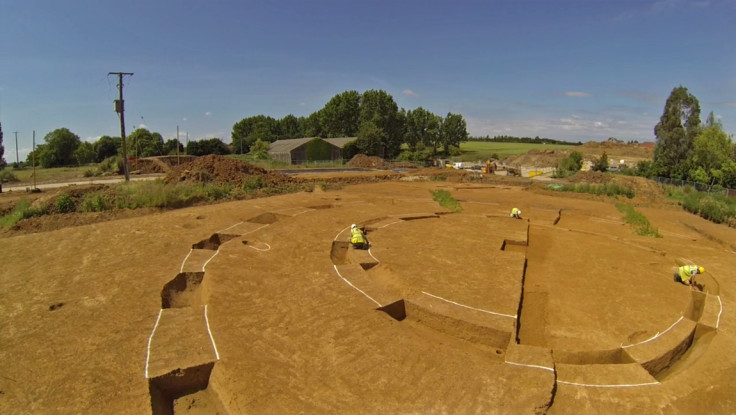Ancient 'woodhenge' discovered in England could have been 4,000-year-old sauna or crematorium
Archaeologists believe the structure in East Yorkshire may have been built in the late Neolithic to the Bronze Age.
Forget Stonehenge - now 'Woodhenge' has been excavated in East Yorkshire after being spotted during aerial surveyshttps://t.co/vRQk7sdG6l pic.twitter.com/vciJmonqKg
— The Yorkshire Post (@yorkshirepost) December 29, 2017
Archaeologists in England have discovered what they believe could be a wooden version of the famous Stonehenge. The team unearthed traces of a henge in East Yorkshire, which is the first of its kind to be found in the region.
According to a report by the Yorkshire Post, the remains at the site at the Little Catwick Quarry, located near the North Sea coast, indicate it housed a structure made of wooden posts. A ditch and bank were later built to encircle the structure. Two entrances were created, one to face the northwest while the other stood on the southeast side.
Researchers have discovered a pit in the middle of the site, along with heavily burned stones. Similar stones were also found near the entrances and may have been discarded there after use.
"Normally when you mention ritual, archaeologists laugh," lead archaeologist John Tibbles, from East Riding Archaeology, told the local news site. "But in this case it was ritual, it was a meeting place, where all the little groups could come together. We found a lot of burnt stones, but they weren't burned in situ... It is possible that bodies were brought there to be cremated and then the remains buried elsewhere."
Tibbles believes the site may have a link to a cemetery in Sandsfield, a mile away, where 37 urns were found in a ring ditch. The artefacts date back to the same time as the henge — which experts believe was in use between the late Neolithic to early Bronze Age.
The Yorkshire Post suggested that the newly discovered site may have been like the henge in Margen, which researchers believe could have been used as a sweat lodge.
Jim Leary, the University of Reading's field-school director who led the excavation in Kent noted that there were no traces of coal or wood inside the building but proof of large fires outside. "I think what's happening is that people are heating up the stones on the external fire, and then carrying them into the building and placing them on the internal hearth," he said according to Dig Ventures.
"That would explain the lack of charcoal inside the building. What's more, the building is very well made, with a very substantial ledge perfect for sitting on, and the hearth really does dominate the whole space – there's no room to do anything else apart from sitting around it. There's no living space".

Tibbles is not fully convinced that the Yorkshire site is similar but is not willing to throw the idea out of the window completely. "I'd like to totally dismiss it — but they have had them in Finland for 2000 years and there is Marden Henge," he mentioned.
In a few months, the newly discovered henge will be dug up as a part of the expansion of the quarry but Tibbles said that the site details will first be recorded in painstaking detail.
Other ancient finds in the area include a mammoth tusk and a 4,000 to 5,000-year-old Cumbrian greenstone axe.






















